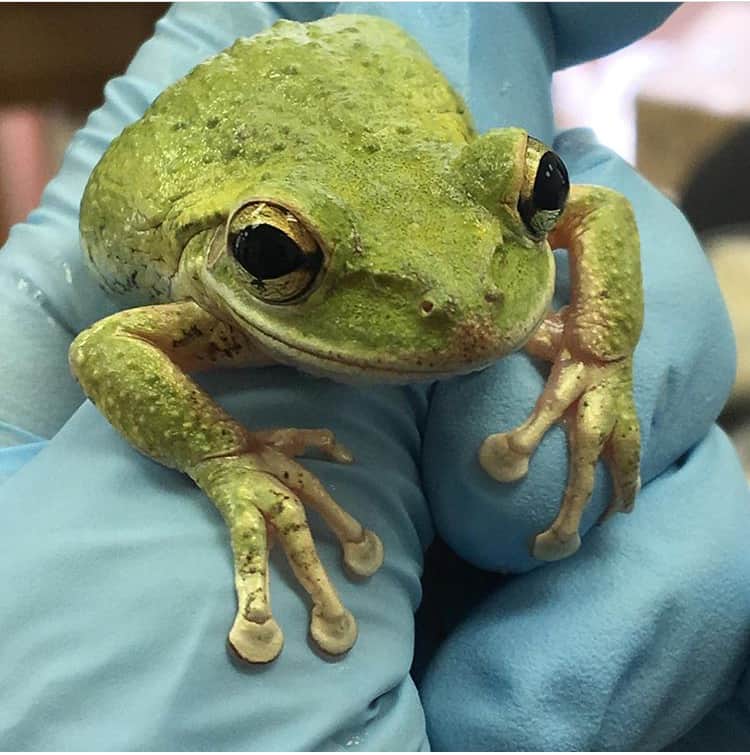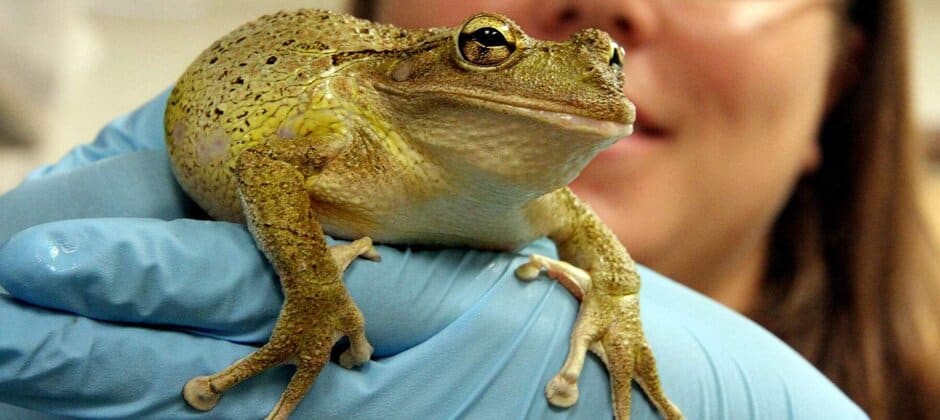Share this article
Two amphibian species can learn to avoid chytrid
Not all amphibians cope the same way with deadly infectious diseases. While some apparently learn how to avoid dangerous exposures, others can be protected using something similar to a vaccination.
Chytrid disease, caused by the fungus Batrachochytrium dendrobatidis, has led to widespread population losses among frogs across the world. In some cases, it has even caused extirpations.
Researchers are attempting different strategies to deal with the pathogen. Some are removing wild frog populations to keep them in captivity in a sort of amphibian ark until natural resistance builds. Others are finding ways to vaccinate amphibians to resist the fungus in the first place.
But new lab tests on the fungus and some of the metabolites—or chemical components—that make it deadly, shows that the amphibians’ ability to resist the pathogen might come down to their behavior. Scientists have found that not all species act the same when it comes to learning to avoid the fungus in the first place.
“[Some of] the toads were able to learn to avoid the fungus and avoided all of the treatments with the metabolites in it,” said Taegan McMahon, a conservation disease ecologist and assistant professor at Connecticut College, a private liberal arts school. McMahon is the lead of the study published recently in the Journal of Applied Ecology.
The chytrid disease is deadly to amphibians in part because the fungal spores use chemicals to break down the natural defenses in their skin. Once those spores are inside the frog, they proliferate, causing the skin to thicken and other problems that can lead to death.
McMahon and her co-authors, which mostly included undergraduate students at Connecticut College, broke down the fungus to see what metabolites, or mixtures of chemicals, were involved. She had done a study previously in 2014 that found oak toads (Bufo quercicus) learned to avoid chytrid. She and her colleagues in that study put the toads in a container with moist paper towels on both sides. One side had chytrid fungus spores, while the other side had just water. If the toads had no prior exposure to chytrid, they didn’t show any preference. But the toads that had contracted chytrid in the past and had since been cleared, avoided the side with spores.
But they didn’t know what caused the toads to stay away. Was it the metabolites in the fungus that perhaps produced pain or discomfort? Or was it something else? They also didn’t know if other species showed the same behavior.
They designed new experiments with four species of toads: southern toads (Bufo terrestris), Cuban tree frogs (Osteopilus septentrionalis), greenhouse frogs (Eleutherodactylus planirostris), and pine woods tree frogs (Dryophytes femoralis). They exposed these frogs to different treatments that involved the same container with moist paper towels set up.
In one experiment, they had fungus on one side and water on the other. In another, they had the chemical metabolites on one side and water on the other. In some, they had dead fungus instead of live fungus and water on the other side. And finally, they had some containers with dead fungus and chemical metabolites on one side and water on the other side. The undergraduate students then watched the frogs for three to four hours to track their behavior.
The team included amphibians that had previously been exposed to the fungus and individuals that hadn’t in their experiments.
They found that none of the individuals that hadn’t been previously exposed to the fungus or metabolites showed any innate response—they didn’t avoid the paper towels with fungus or metabolites.
In previous work, oak toads had learned to avoid the fungus. But of the four tested, only the southern toads learned to avoid the fungus after being exposed to it before. The three frog species did not learn from previous experiences.

Cuban tree frogs developed some resistance to chytrid after being previously exposed to the fungus or to similar chemical metabolites. Credit: Taegan McMahon
“We can’t assume all species are going to be able to learn to avoid,” McMahon said, adding that this was surprising because some of the frog species were particularly susceptible to dying from the chytrid fungus, even at relatively low exposures.
“You would expect with really high sensitivity like that, you would see really high selective pressure with this species,” she said.
They found little difference in behavioral response between the metabolites and the living fungus itself. Southern toads that had been exposed to chytrid before, later avoided the metabolites as well as the live fungus.
McMahon said the researchers gave some of the four species an initial prophylaxis dose of the chytrid to see whether it would make them less susceptible to dying from the fungal pathogen on subsequent exposures. They found that this initial exposure could indeed be used as a type of vaccine for the amphibians tested.
This is important, especially when it comes to reintroductions of species held in captive populations. The chytrid fungus doesn’t disappear from the environment with the absence of amphibians—it can infect crayfish as well. Once frogs are reintroduced to areas they had been previously extirpated or removed from, they were still getting infected by chytrid, and those reintroductions failed.
But vaccinations using the prophylaxis might help survival of the initial generation that is reintroduced to the wild. Their research has also shown that tadpoles exposed to the fungus and later cured also develop resistance in their later life.
“It’s very possible we’ll be able to use this for more successful reintroductions for some species,” she said.
Header Image: Taegan McMahon holds a Cuban tree frog. Courtesy of Taegan McMahon








